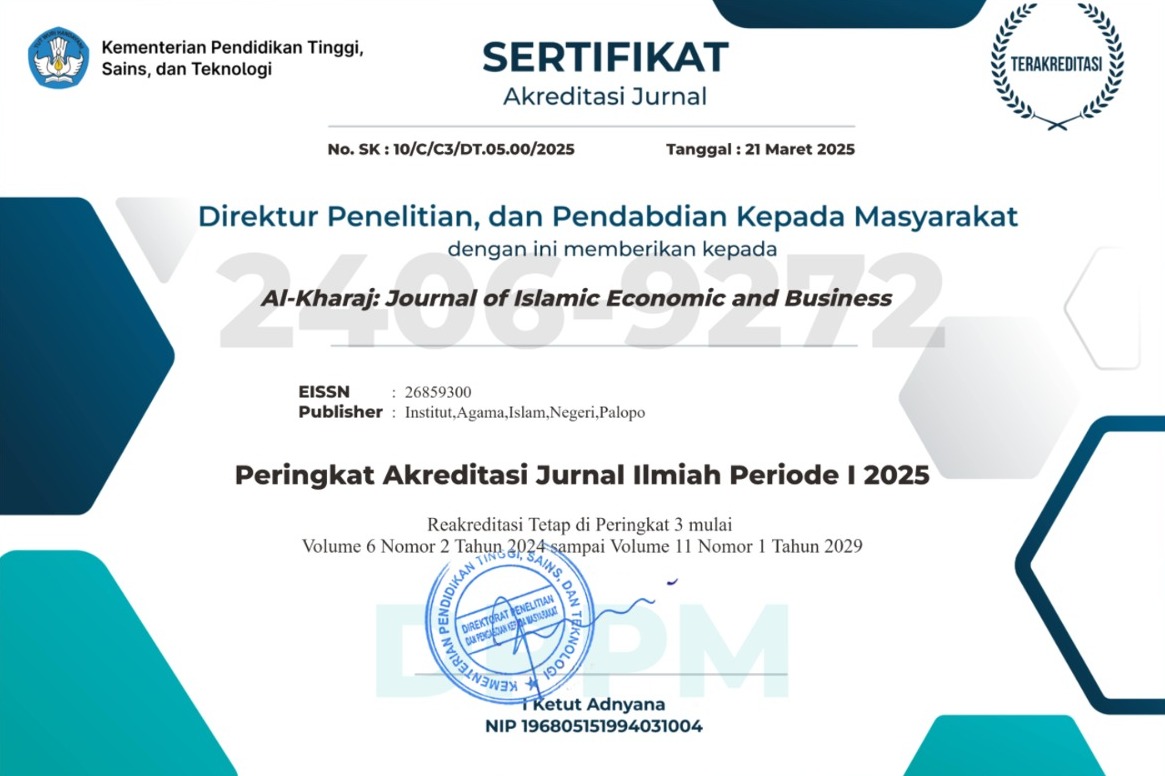Optimizin Communiy-Based Landslide Emergency Management at Curug Cilember, Indonesia: an ISO 45001-Oriented Approach
DOI:
https://doi.org/10.24256/kharaj.v6i4.6572Keywords:
Community participation, Cilember Waterfall, ISO 45001, Landslides, Emergency management.Abstract
This study aimed to evaluate the landslide emergency management system at the Curug Cilember tourist site, Megamendung District, Bogor Regency, with a focus on the role of local community participation and optimization strategies based on ISO 45001 standards. A qualitative descriptive method was applied, using interviews, field observations, and literature studies, with purposively selected informants relevant to the research context. The results show that the emergency management system includes cross-sectoral planning, implementation through simulations and training, and regular evaluations involving community discussions. The findings highlight key supporting factors such as the presence of disaster-resilient village programs, while identifying obstacles including limited coordination, budget constraints, and low public awareness of landslide risks. Optimization strategies involve strengthening emergency communication, providing regular community-based training, improving evacuation infrastructure, and implementing ISO 45001-based procedures. In conclusion, the synergy between tourism managers, local communities, and visitors is essential to establish an effective and sustainable emergency response system that enhances disaster preparedness and community resilience.
References
Dahal, A., Huser, R., & Lombardo, L. (2024). At the Junction Between Deep Learning and Statistics of Extremes: Formalizing the Landslide Hazard Definition. Journal of Geophysical Research: Machine Learning and Computation, 1(3). https://doi.org/10.1029/2024jh000164
Haribulan, R., Gosal, PH, & Karongkong, HH (2019). Physical Vulnerability Study of Landslide Disaster in North Tomohon District. Spatial, 6(3), 714–724.
Harist, MC, Saraswati, R., & Rustanto, A. (2019). Community Vulnerability and Capacity to Landslides in South Babakan Madang Subdistrict, Bogor Districts. E3S Web of Conferences, 125(201 9). https://doi.org/10.1051/e3sconf/201912503012
Hatibe, A., Salam, A., Ali, M., & Gustina. (2021). The effect of disaster knowledge and public attitudes on the preparedness to face landslide disasters. Journal of Physics: Conference Series, 1760(1). https://doi.org/10.1088/1742-6596/1760/1/012002
Herdiansyah, AR, Augustiawan, AA, Abdullah, AAA, Wijaya, H., Muslim, D., Asa, M., & Zahra, RA (2024). Multi-temporal analysis of landslide susceptibility in the Greater Bogor Area and its relation to land use change and rainfall variation. IOP Conference Series: Earth and Environmental Science, 1313(1). https://doi.org/10.1088/1755-1315/1313/1/012025
Morgado, L., Silva, F. J. G., & Fonseca, L. M. (2019). Mapping occupational health and safety management systems in Portugal: Outlook for ISO 45001:2018 adoption. Procedia Manufacturing, 38(2019), 755–764. https://doi.org/10.1016/j.promfg.2020.01.103
Munajati, SL, Kartodihardjo, H., Saleh, MB, & Nurwadjedi. (2022a). EcoAsystem services analysis as disaster prevention and protection functions in Bogor Regency, West Java. IOP Conference Series: Earth and Environmental Science, 950(1). https://doi.org/10.1088/1755-1315/950/1/012005
Munajati, SL, Kartodihardjo, H., Saleh, MB, & Nurwadjedi. (2022b). Ecosystem services analysis as disaster prevention and protection functions in Bogor Regency, West Java. IOP Conference Series: Earth and Environmental Science, 950(1). https://doi.org/10.1088/1755-1315/950/1/012005
Saputra, PD, Rahmawati, C., Karuniakhalida, P., Purnomo, KSH, & Larosa, E. (2021). The development of the model of influence of sociodemographic characteristics and disaster experience toward household preparedness for facing landslides in Bogor regency. IOP Conference Series: Earth and Environmental Science, 708(1). https://doi.org/10.1088/1755-1315/708/1/012049
Sarah, D., Zulfahmi, Z., Hilmi, M., Putra, Z., Madiutomo, N., Gunawan, G., Sumaryadi, S., & Ahmid, D.A. (2024). Back Analysis of Rainfall-Induced Landslide in Cimanggung District of Sumedang Regency in West Java Using Deterministic and Probabilistic Analyses. 1–22.
Siswo Hadi Sumantri1, Anwar Kurniadi2, Christine Marnani3, AH, & Sutawidjaya4. (nd). The Improvement of Community Capacity in Facing the Landslide in Sukajaya Subdistrict of Bogor Regency. Technium Social Sciences Journal.
Tjahjono, B., Firdania, I., & Trisasongko, B.H. (2024). Modeling Landslide Hazard Using Machine Learning: A Case Study of Bogor, Indonesia. Journal of Natural Resources and Environmental Management, 14(2), 407–414. https://doi.org/10.29244/jpsl.14.2.407
Tudies, PDEHAS (2018). Pr ep r int no tp ee rr ev ed Pr ep rtprr ed. 963(0).
Umbara, RP, Melati, DN, Astisiasari, Wisyanto, Trisnafiah, S., Trinugroho, Arifianti, Y., Prawiradisastra, F., Ramdhani, TI, Arifin, S., & Anggreainy, MS (2024). Utilization of Frequency Ratio and Logistic Regression Model for Landslide Susceptibility Mapping in Bogor Area. International Journal on Advanced Science, Engineering and Information Technology, 14(2), 528–539. https://doi.org/10.18517/ijaseit.14.2.19345
Downloads
Published
How to Cite
Issue
Section
Citation Check
License
Copyright (c) 2025 Yakin Ermanto, Dwi Nowo, Kosuke Mizuno

This work is licensed under a Creative Commons Attribution-ShareAlike 4.0 International License.
Authors retain copyright and grant the journal right of first publication with the work simultaneously licensed under a Creative Commons Attribution-ShareAlike 4.0 International License. In line with the license, authors are allowed to share and adapt the material. In addition, the material must be given appropriate credit, provided with a link to the license, and indicated if changes were made. If authors remix, transform or build upon the material, authors must distribute their contributions under the same license as the original.









